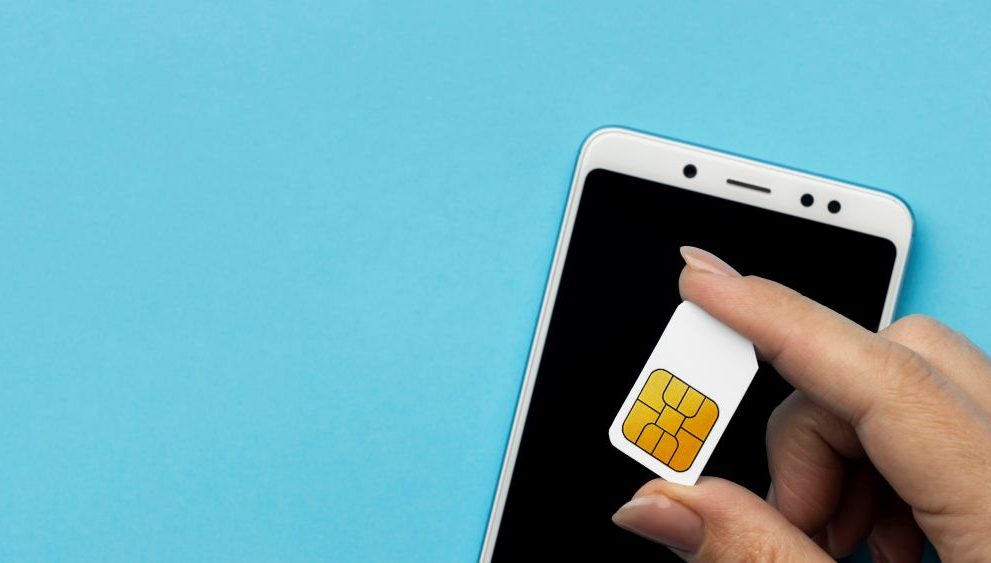In recent years, a growing threat known as SIM swapping has put smartphone users at risk of identity theft, financial loss, and privacy breaches. SIM swapping, also known as SIM swap fraud, allows attackers to gain control of your phone number and access sensitive accounts tied to it. As this type of SIM card swap fraud becomes more prevalent, it’s crucial to understand how to secure your smartphone and mobile accounts from falling victim.
To protect yourself from this SIM swap scam, it’s essential to take proactive measures for SIM swap fraud prevention and implement robust SIM swap protection strategies.
What is SIM Swapping?
SIM swapping is a type of account takeover fraud that allows attackers to gain control of your phone number by convincing your mobile carrier to port it to a SIM card in their possession. Here’s how a typical SIM card swap attack works:
- The attacker gathers personal information about you, such as your name, phone number, and last four digits of your Social Security number, through phishing, social engineering, or buying it on the dark web.
- The attacker contacts your mobile carrier, impersonates you, and requests to port your number to a new SIM card they own.
- If successful, your phone number is transferred to the attacker’s SIM, and you lose cellular service.
- The attacker can now intercept your calls, texts, and two-factor authentication codes sent via SMS.
How Does SIM Swapping Threaten Your Smartphone and Privacy?
SIM swapping poses a significant threat to your smartphone security and personal privacy:
- Unauthorized account access: Attackers can use your phone number to bypass two-factor authentication and gain access to your online accounts, including email, banking, and social media.
- Financial theft: With access to your banking and payment apps, attackers can steal funds, make unauthorized purchases, or transfer money to their own accounts.
- Data theft: Hackers can access sensitive information stored on your phone or in your cloud accounts, such as personal photos, documents, and confidential business data.
- Loss of communication: Once your SIM is swapped, you lose the ability to make or receive calls and texts from your phone number, which can be especially problematic in emergencies.
- Reputational damage: Attackers may use your compromised accounts to send malicious messages or spread misinformation to your contacts, damaging your reputation.
Also read: How to Secure Your Smartphone Against Malware Attacks
Top Signs You Might Be a Victim of SIM Swapping
Recognizing the early signs of a SIM swapping attack is crucial for minimizing damage and preventing further unauthorized access. Be on the lookout for these red flags:
- Unexpected loss of cellular service: If your phone suddenly loses signal or displays “No Service” when you should have coverage, it could indicate your SIM has been swapped.
- Unable to send or receive calls and texts: If you can’t make or receive calls and texts, even with a strong cellular signal, your phone number may have been ported to another SIM.
- Receiving strange SMS messages: If you receive texts about account changes, password resets, or two-factor authentication codes you didn’t request, an attacker may be attempting to access your accounts.
- Notifications from your carrier: Some mobile carriers send alerts when a SIM swap request is made. If you receive such a notification without initiating the request, contact your carrier immediately.
- Inability to log into accounts: If you suddenly can’t log into your email, social media, or other accounts associated with your phone number, an attacker may have changed your passwords after a successful SIM swap.
Steps to Protect Your Smartphone from SIM Swapping
Use a Strong PIN or Password for Your SIM Card
One of the first lines of defense against SIM swapping is setting a strong PIN or password for your SIM card. This adds an extra layer of security, making it harder for attackers to port your number without your consent.
To enable a SIM PIN:
- Go to your phone’s Settings > Security > Set up SIM card lock.
- Toggle the “Lock SIM card” option on.
- Enter a unique PIN (not your birthdate or other easily guessable numbers).
- Confirm the PIN and save your changes.
Remember to choose a strong PIN that’s different from your other passwords and PINs. Avoid using easily guessable numbers like 1234 or 0000.
Enable Two-Factor Authentication (2FA) Everywhere Possible
Two-factor authentication (2FA) adds an extra layer of security to your accounts by requiring a second form of verification beyond your password. While SMS-based 2FA is better than no 2FA at all, it’s vulnerable to SIM swapping attacks.
Whenever possible, opt for more secure 2FA methods, such as:
- Authenticator apps (e.g., Google Authenticator, Authy)
- Hardware security keys (e.g., YubiKey)
- Biometric authentication (e.g., fingerprint, facial recognition)
Be Cautious of Phishing Scams
Phishing scams are a common tactic used by attackers to trick you into revealing personal information that can be used for SIM swapping. These scams often come in the form of emails, text messages, or phone calls claiming to be from your mobile carrier, bank, or other trusted entity.
To avoid falling for phishing scams:
- Be suspicious of unsolicited messages requesting personal information or urgent action.
- Don’t click on links or download attachments from unknown sources.
- If you receive a suspicious message claiming to be from your carrier or bank, contact them directly using a trusted phone number or website to verify its legitimacy.
- Never give out your personal information, account credentials, or one-time passwords to unverified sources.
Alert Your Mobile Carrier About SIM Swap Protection
Many mobile carriers offer additional security measures to help protect against SIM swapping. Contact your provider and ask about their options for SIM swap protection, such as:
- Account freezes or locks that prevent unauthorized changes to your account
- Extra security questions or PIN requirements for account changes
- Port-out authorization that requires additional verification before your number can be ported
- Alerts or notifications for any SIM swap requests on your account
To set up an account lock or password with your carrier:
- Call your carrier’s customer support or visit a store in person.
- Request to set up an account lock, passcode, or port-out authorization.
- Choose a strong, unique passcode or PIN not used for any other accounts.
- Verify the lock or password is active on your account.
Use Mobile Apps with Strong Security Features
When choosing mobile apps, especially for sensitive tasks like banking or messaging, opt for those with strong security features. Look for apps that offer:
- End-to-end encryption for messaging and data storage
- Two-factor authentication options beyond SMS
- Biometric login (e.g., fingerprint, facial recognition)
- Automatic logout after a period of inactivity
- Remote wipe capabilities in case your phone is lost or stolen
Additionally, keep your apps and operating system up to date with the latest security patches and updates. Hackers often exploit known vulnerabilities in outdated software to gain unauthorized access to devices and accounts.
Consider using a mobile security solution like Quick Heal Total Security, which offers real-time threat detection, safe browsing, Wi-Fi security, and anti-theft features to protect your smartphone from various cyber threats.
Monitor Your Bank and Social Media Accounts
Regularly monitoring your sensitive accounts can help you detect and respond to suspicious activity quickly. This is especially important for accounts linked to your phone number, such as mobile banking and social media profiles.
To stay vigilant:
- Check your bank statements and credit card activity for unauthorized transactions.
- Review your social media accounts for posts or messages you didn’t create.
- Enable alerts or notifications for unusual login attempts or account changes.
- Use credit monitoring services to detect any new accounts opened in your name.
What to Do if You’re a Victim of SIM Swapping
If you suspect you’ve fallen victim to a SIM swapping attack, act quickly to minimize the damage:
- Contact your mobile carrier immediately to report the fraudulent SIM swap and regain control of your phone number.
- Change the passwords for all accounts associated with your phone number, prioritizing your email, banking, and social media accounts.
- Check your bank statements and credit card activity for unauthorized transactions and report any fraudulent charges to your financial institutions.
- Notify your contacts that your accounts may have been compromised and to be cautious of any suspicious messages coming from you.
- Report the incident to local law enforcement and file a complaint with the Federal Trade Commission (FTC) at IdentityTheft.gov.
- Consider placing a fraud alert or credit freeze on your credit reports to prevent attackers from opening new accounts in your name.
Stay Safe with Quick Heal
SIM swapping is a serious threat that can have devastating consequences for victims, from financial loss to identity theft. As our lives become increasingly tied to our smartphones, it’s crucial to take proactive measures to protect ourselves from this growing form of fraud.
Don’t wait until it’s too late to secure your smartphone and mobile accounts. Take action now to protect your digital identity and give yourself peace of mind in an increasingly connected world. Stay informed about the latest threats and best practices for mobile security, and share this knowledge with your friends and family to help create a safer online community for everyone.
Related Products:
Quick Heal Total Security for Mac
Quick Heal AntiVirus for Server

